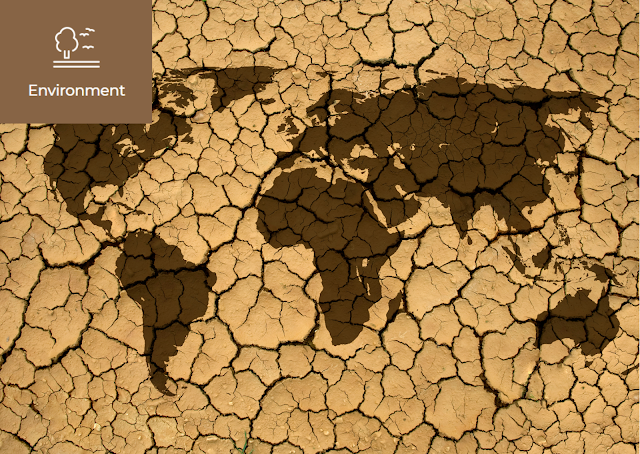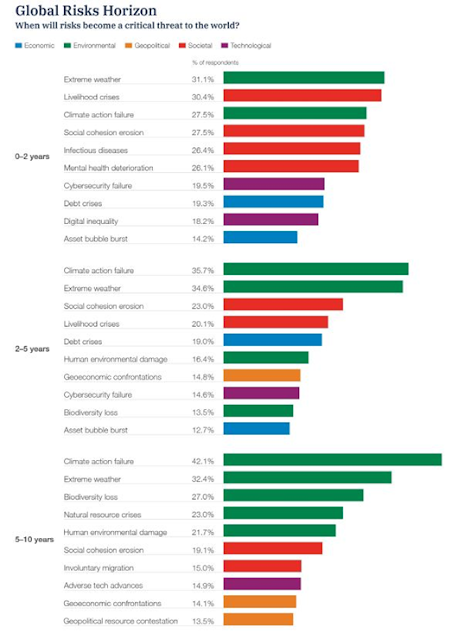―
The
Apocalyptic Film 2012
Could
it really happen?
―
A humongous earthquake strikes Los Angeles,
the United States, and a family desperately attempts to escape in a private
plane. But they soon discover the effects of the seismic shift are not limited
to California's metropolis. A huge tsunami circles the entire globe, swamping
even the peak of Mount Everest, and causing supervolcanoes to blow sky-high.
Literally the
End of the World!
Those who predicted the catastrophe in
advance and can afford it undertake a modern “Noah's Ark” project. Only the
select few can board: the global ultra-rich and empowered technocrats
knowledgeable in the field who funded the expedition will get a ticket to ride
this “New Ark.”
Thus opens the apocalyptic movie “2012,”
graphically portraying the process of instantaneous destruction of the earth as
the center of the earth heats up like a microwave oven due to intense and
sustained solar flares.
Unrealistic though it might seem, in the
last decade or so, natural disasters including massive earth tremors, tsunamis,
and wildfires have been occurring around the world at an alarming tempo,
recalling this ominous movie, originally screened in 2009. Anxiety is
ratcheting up that colossal calamity threatening the entire human race may
indeed be in the offing.
―
These
Next Ten Years
The Top Ten Dangers Threatening Our World
―
Download “Report 2022” at: https://www.weforum.org/reports/global-risks-report-2022
In January, the World Economic Forum (WEF)
published “The 2022 Global Risk Report.” This annual assessment is prepared by
the World Economic Forum at the beginning of each year based on a survey of
1,000 leading businessmen, academicians, scientists, and well-placed officials
from 124 countries in the fields of economy, science, politics, and society. In
this year's Report, experts named “The Environment” as the most important
threat looming over humanity in the coming 10 years.
A careful examination of the contents of
the report raises real concern that the devastating scenarios portrayed in the
film “2012” might indeed come true. The report itemizes the top 10 salient risk
factors that humanity and the globe may have to grapple with in the next 10
years. These hazards are divided into five areas: economy, environment,
geopolitics, society and technology. Experts cited the environmental field “Climate
Action Failure” as the biggest danger hanging over us.
To summarize, the chief dangers risk experts foresee in the coming decade are, in order: ▲failure to take action in climate change ▲extreme weather phenomena ▲biodiversity loss ▲weakened social cohesion ▲livelihood crisis ▲epidemic disease ▲human harm to the environment ▲crises over natural resources ▲debt crisis ▲global economic confrontation. |
We're constantly hearing about
environmental issues, and it can grow tiresome; we become inured to the topic.
But the gong of doom is not backing off—ranking second and third place are also
environmental warning signs: “extreme weather” and “biodiversity loss.” In
other words, the top 3 global risks are all environmental in nature.
Not only these, but “Human environmental
damage” and “Natural resource crises” placed 7th and 8th. They are also
concerned about the biosphere, establishing that
not only our perceptions but also scientific and statistical indicators point
to the natural environment as the biggest danger impinging on humanity's
existence now.
―
Environmental
issues span the greatest global
>short-term, medium range and long-term risks
―
Worse yet,
environmental issues figure as the biggest global hazard over the short, medium
and long term. The report lists risk factors as short-term (2 years),
medium-term (2-5 years), and long-term (5-10 years). “Extreme weather” and “Climate
action failure” are consistently at top of the list.
Environmental problems are happening around
us right now; every indication shows that they will pose even more serious
challenges in time to come. If this continues, we may find ourselves in the
calamity of the film “2012” in the not-too-distant future.
―
“What is the level of organized response to climate change?”
68% of the experts surveyed responded “in the initial phase”
―
When queried about the “level of response
to climate change,” 68% of the experts responding to the report answered
that it was “in the early stage.” 9% of the respondents said that we have
not started yet. The World Economic Forum stressed that “comprehensive climate
action by businesses, policy makers and civil society is essential to limit
global temperature rise to no more than 1.5 degrees Celsius over pre-industrial
levels.”
―
Intensifying crises linked to COVID-19
warn of "Social Danger"
―
Six percent! This is the overall rate of
COVID-19 vaccination for the 52 world's poorest nations. The report also
examined the risks most exacerbated by COVID-19 and found that “social risk
factors” increased significantly due to the pandemic. Among the causes of
increased social risk are social distancing, vaccine inequality, and economic
deterioration aggravated by COVID-19.
In 1st place is “Social cohesion,” “Livelihood crises” hold 2nd place, “Climate action
failure” ranks 3rd, and 4th place features “mental health
deterioration”.
Social instability from such risk factors
inevitably undermines effective national policymaking. The report points out
that the growth gap between developed and developing countries due to vaccine
inequality may hamper a unified response to global issues such as climate
change.
―
The
question of our very survival or downfall:
The
answer lies in our actions!
―
- The temperature high in Cordoba, Spain
in 2017 was 46.9°C (highest ever recorded)
- Dallas, Texas recorded the lowest
temperature in 72 years: -19°C in 2021
- Summer temperatures in the normally ice-bound
Arctic now hover 10°C higher than usual.
Abnormal climate phenomena are cascading
all over the world, causing records to tumble. The protagonist of the
apocalyptic film "2012" wages a desperate struggle to save his family
with human extinction looming on all sides. Perhaps this present moment, now is
the golden time for such a last-ditch effort to postpone the extinction of humankind.
The final scene of “2012” is
neither a joyful relief nor a gloomy tragedy. In any case, the President of the
United States in the screenplay states the golden one-liner: “The world as we
know it is coming to an end.” That says it all. In order for our planet not to
end as in the movie, we living, breathing people must take action now to stem
climate change!


.jpg)






